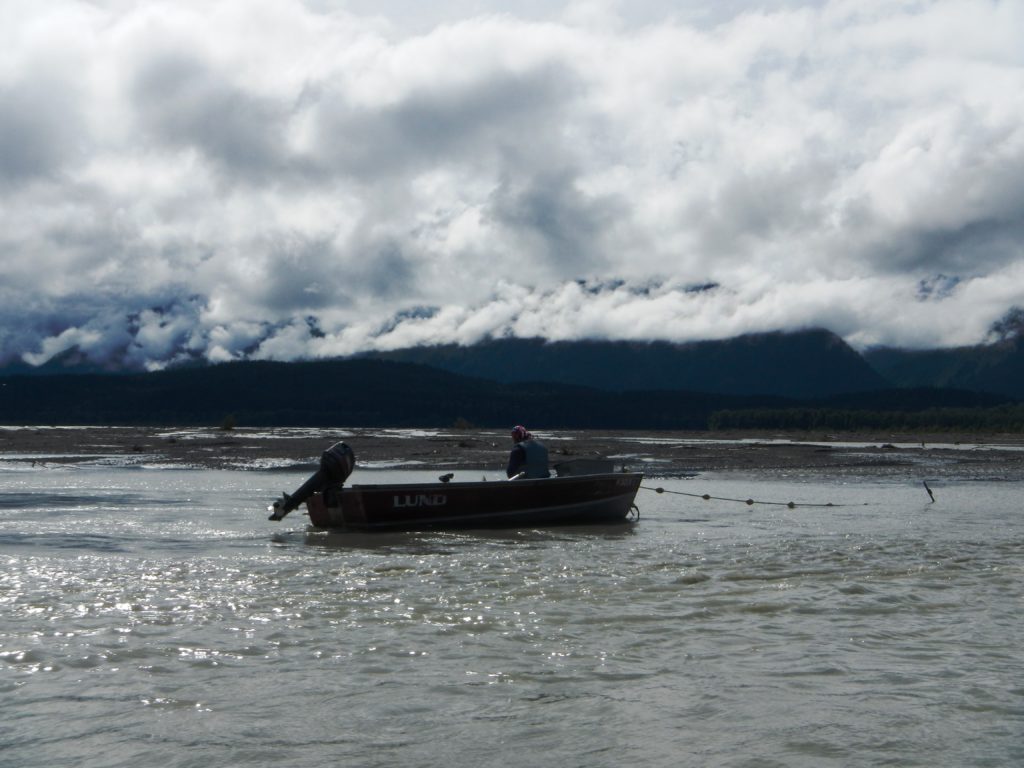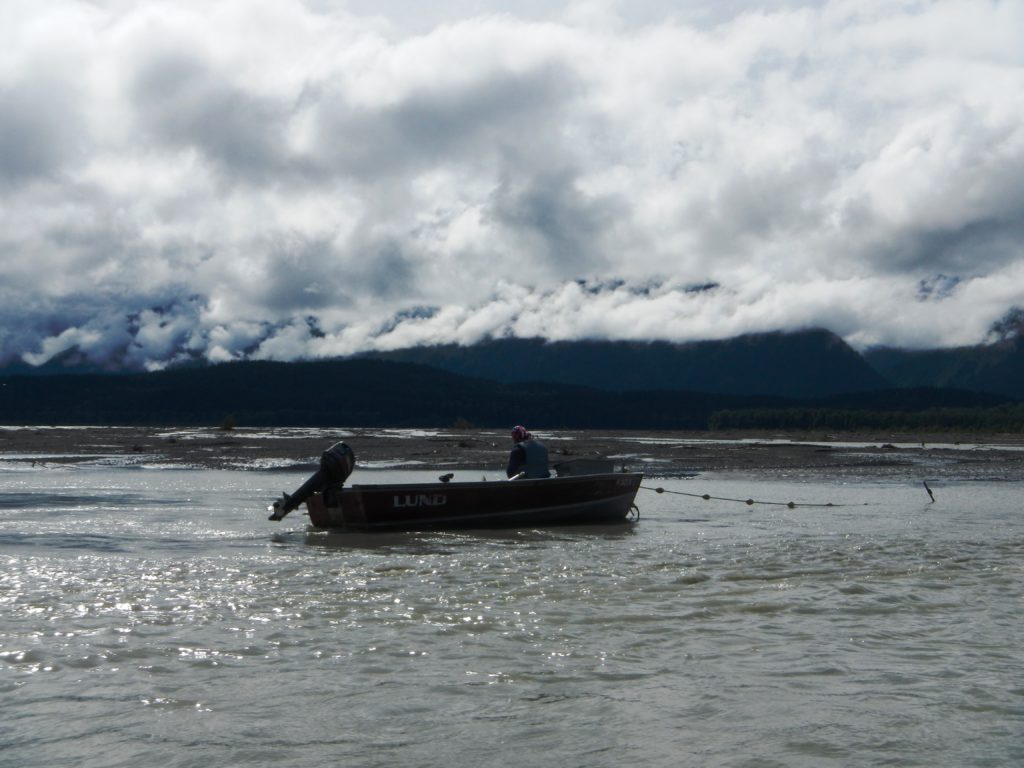
A subsistence fisherman checking his net in the Chilkat River. (Alaska Department of Fish and Game)
It was a debate over fractions of inches at the most recent Upper Lynn Canal Fish and Game Advisory Committee meeting. The committee is proposing subsistence net restrictions in an effort to protect a declining king salmon population. But, they’ve tweaked their proposal to avoid creating a financial hardship for some fishermen.
King salmon numbers in the Chilkat River are at a historic low. Last year the escapement estimate was the lowest it’s been in about 25 years, and things are not likely to improve in 2017. Fish and Game is forecasting only about 600 large Chinook in-river.
Last month, the advisory committee voted to ask the Board of Fisheries to set a maximum gillnet size restriction at 5 ¼ inches. That would apply to the District 15 Southeast Alaska subsistence fishery through August 1.
Chinook aren’t targeted in that fishery. The goal of the net restriction is to limit by-catch. Mature king salmon are typically bigger than the sockeye, pink, coho and chum that are part of the subsistence effort. Ideally, the Chinook wouldn’t fit in a smaller net.
But Derek Poinsette said he heard from subsistence fishermen after the last meeting who are concerned the measure would require them to get a new net. He recommended increasing the size restriction to 5 3/8 inches.
“I just got a bunch of phone calls, people that had old nets, and they all said they had – my nets are all five and a quarter – but they said they had five and three eighths,” said Poinsette. “And so I said I would try to amend it. What difference does and eighth of an inch make?”
Randy Jackson suggested bumping that up a little further, to 5 ½. But Poinestte pushed back on that. So did Will Prisciandaro.
“I think we should stick to five and three eights, five and a quarter,” said Prisciandaro. “The subsistence fishery, especially early season is directed toward sockeye, it’s not directed toward – we’re going to save kings but your net should be directed toward the fishery that is there, not a larger size.”
Prisciandaro said they should also be conscious of research from Fish and Game biologist Brian Elliot that shows returning kings are smaller than they once were.
With that in mind, Jackson suggested they go back to the original net restriction proposal.
“In that context we should stick to five and a quarter because it is going to be more restrictive,” said Jackson. “If somebody has a five and three eighths inch net, they’re just going to have to come in under the bar and get another net.”
But Prisciandaro said they should try to avoid creating a financial hardship for local fishermen.
“I’m fine with five and three eighths. I would have liked a five and a quarter but I don’t want to make a hardship on the subsistence user group.” said Prisciandaro.
According to the group, subsistence gillnets can cost anywhere from 50 to hundreds of dollars.
The committee voted unanimously to amend the proposal to 5 3/8 inches. They also voted to change the request to exclude Lutak and Chilkoot inlets from the restrictions. If implemented, subsistence fishing from Glacier Point, north in Chilkat Inlet and in the Chilkat River from four mile to one mile above Wells Bridge would be affected. The proposal will go to the Board of Fish for its 2017/2018 cycle, which means this summer’s subsistence fishing won’t be affected.
Mark Sogge, who manages the local subsistence fishery for Fish and Game, said it is possible for the department itself to put restrictions on subsistence nets. Though, he said they aren’t planning to take that step this year.
But Fish and Game is implementing a number of other restrictions across the board this year, in an attempt to protect Chinook. That includes a near shutdown of sport fishing for kings around Haines and Skagway.










Haines is at the end of the migration, the fish that make it to Haines have run the gauntlet to get here. Why is it that we, the fisher folk in Haines are the hardest hit when it comes to fishing restrictions? Why have the fish stocks declined so dramatically? Surely the few fish that local fisher folk catch isn’t the cause.